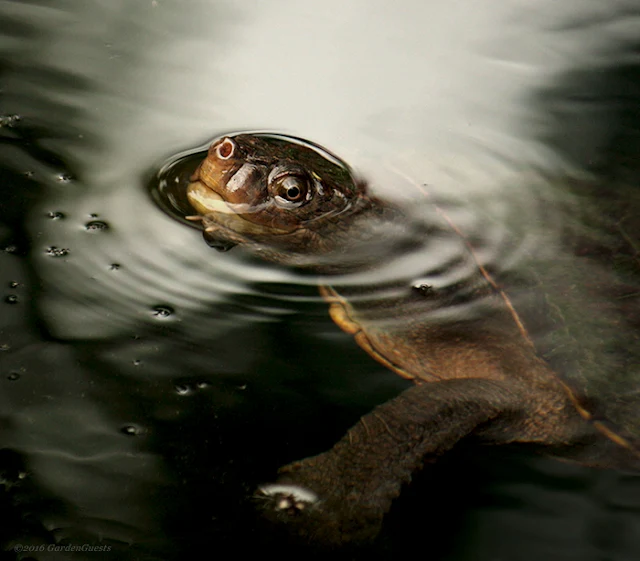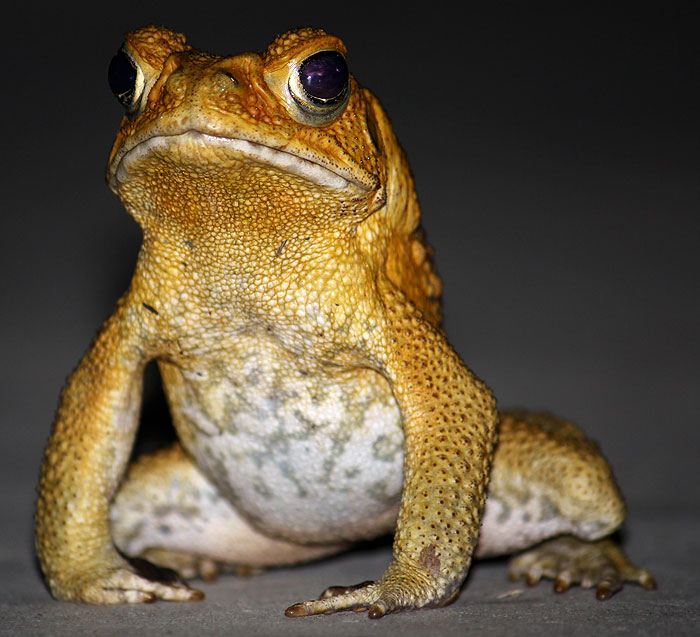Saw-shelled turtle - Myuchelys latisternum
I'm not sure what it is about turtles, maybe it's their enduring 'smile'. But something about them always manages to lift my spirits.
These particular animals live in a secret little tributary in the rainforest - and no, I'm not going to say where (wouldn't be a secret then, would it?).
I counted at least four but perhaps five, with a nice mix of males and females (in general the females have deeper shells) - makes sense as they have to have room for their eggs when the time comes, and it's not like they can loosen their belts or throw on a pair of sweatpants eh?
On occasion they seemed to seek each other out, almost as if they were looking for reassurance, or perhaps they just like to know that no one has latched on to any good meals without sharing.
Getting a decent snap of fresh-water turtles is always a bit hit and miss. They're acutely aware of their surroundings and at the slightest provocation will dive out of sight in a flurry of furiously flapping feet (try saying that after a couple of beers).
Myuchelys latisternum belong to the genus "Myuchelys", derived from the Aboriginal word "myuna" ("clear water"), and the Greek word "chelys" ("turtle"). Males of the species sometimes end up as road kill as they have the unfortunate habit of wandering off in search of prospective mates.
There's nothing quite so pathetic as the sight of a turtle crushed on a road.
The good news though, is that this turtle doesn't seem to be under threat, at least here in the North (the same cannot be said for many other species around Australia).
If you're interested in turtles - esp if you're considering keeping one as a pet, make sure to do your research. Jo tells me that a local(ish) pet shop is selling turtles under the name 'penny-turtles'. There is no such animal in Oz.
It's a catch-all phrase for at lease five species, and it's also a sign that the shop in question is either too lazy to identify the animals, or they're simply ignorant with regard to what they sell.
Either way it's not a good look is it?.
Well my friends, that's about it - hope all's well with you. And until next time, as always - Take care, Paul
These particular animals live in a secret little tributary in the rainforest - and no, I'm not going to say where (wouldn't be a secret then, would it?).
I counted at least four but perhaps five, with a nice mix of males and females (in general the females have deeper shells) - makes sense as they have to have room for their eggs when the time comes, and it's not like they can loosen their belts or throw on a pair of sweatpants eh?
On occasion they seemed to seek each other out, almost as if they were looking for reassurance, or perhaps they just like to know that no one has latched on to any good meals without sharing.
 |
Myuchelys latisternum |
 |
Very shy |
Getting a decent snap of fresh-water turtles is always a bit hit and miss. They're acutely aware of their surroundings and at the slightest provocation will dive out of sight in a flurry of furiously flapping feet (try saying that after a couple of beers).
 |
... like very, very shy |
The saw-shelled turtle, Myuchelys latisternum, is a species of turtle in the Chelidae family endemic to Australia, ranging along rivers and streams and connected swamps and lagoons from coastal Cape York Peninsula to northern New South Wales, with populations also noted as far south as Newcastle - (Williams River Catchment site of the former Tilligra Dam).
They are thought to have been introduced to Lake Eacham in the Atherton Tablelands. Other common English names are: Serrated Snapping Turtle or Common Sawshell Turtle.
 |
(Myuchelys) |
Myuchelys latisternum belong to the genus "Myuchelys", derived from the Aboriginal word "myuna" ("clear water"), and the Greek word "chelys" ("turtle"). Males of the species sometimes end up as road kill as they have the unfortunate habit of wandering off in search of prospective mates.
There's nothing quite so pathetic as the sight of a turtle crushed on a road.
The good news though, is that this turtle doesn't seem to be under threat, at least here in the North (the same cannot be said for many other species around Australia).
Around 20 juvenile eastern long-necked turtles with tiny trackers glued to their shells were released into lagoons at the Western Sydney University Hawkesbury campus, ABC News reports.
The campus is part of the wider Hawkesbury catchment, about 50 kilometres west of Sydney city.
The research was led by zoologist Ricky Spencer, who is worried about the decline in turtle numbers in the Hawkesbury and in other habitats such as the Murray River.
“There’s been a decline of freshwater turtles throughout south-eastern Australia largely because of introduced predators like the fox, which destroy 95 per cent of turtle nests each year,” he said.
 |
Using water plants as cover |
 |
... or just letting it all hang out |
 |
These two were vying for a bit of sunshine |
 |
This guy seemed perfectly content |
If you're interested in turtles - esp if you're considering keeping one as a pet, make sure to do your research. Jo tells me that a local(ish) pet shop is selling turtles under the name 'penny-turtles'. There is no such animal in Oz.
It's a catch-all phrase for at lease five species, and it's also a sign that the shop in question is either too lazy to identify the animals, or they're simply ignorant with regard to what they sell.
Either way it's not a good look is it?.
Well my friends, that's about it - hope all's well with you. And until next time, as always - Take care, Paul
This turtle is one of the few native animals able to eat the toxic cane toad
The Myuchelys latisternum female is considerably larger than the male, with a carapace up to 28 cm long compared to the males which rarely get longer than about 18 cm. The carapace is roughly oval and broad at the rear.They are not usually aggressive, but can bite fiercely. They can also emit a strong smell.
The shell has marginal serrations, which are the reason for its common name. It retains some of these serrations throughout its life. "The head shield extends down the side of the head to just above the tympanum, and the top of the neck has prominent pointed tubercles (many of these with an apical sensory pit)."
The carapace is mainly brown to dark brown, commonly with some dark blotches. The plastron (underside) is yellowish. The head is large with a projecting snout and a horny plate on the top. The neck can fold sideways. The feet are webbed and also clawed. Hatchlings have serrated hind legs which become smooth as they mature.
The shell has marginal serrations, which are the reason for its common name. It retains some of these serrations throughout its life. "The head shield extends down the side of the head to just above the tympanum, and the top of the neck has prominent pointed tubercles (many of these with an apical sensory pit)."
The carapace is mainly brown to dark brown, commonly with some dark blotches. The plastron (underside) is yellowish. The head is large with a projecting snout and a horny plate on the top. The neck can fold sideways. The feet are webbed and also clawed. Hatchlings have serrated hind legs which become smooth as they mature.






Comments
Post a Comment